The Botany of Harry Potter
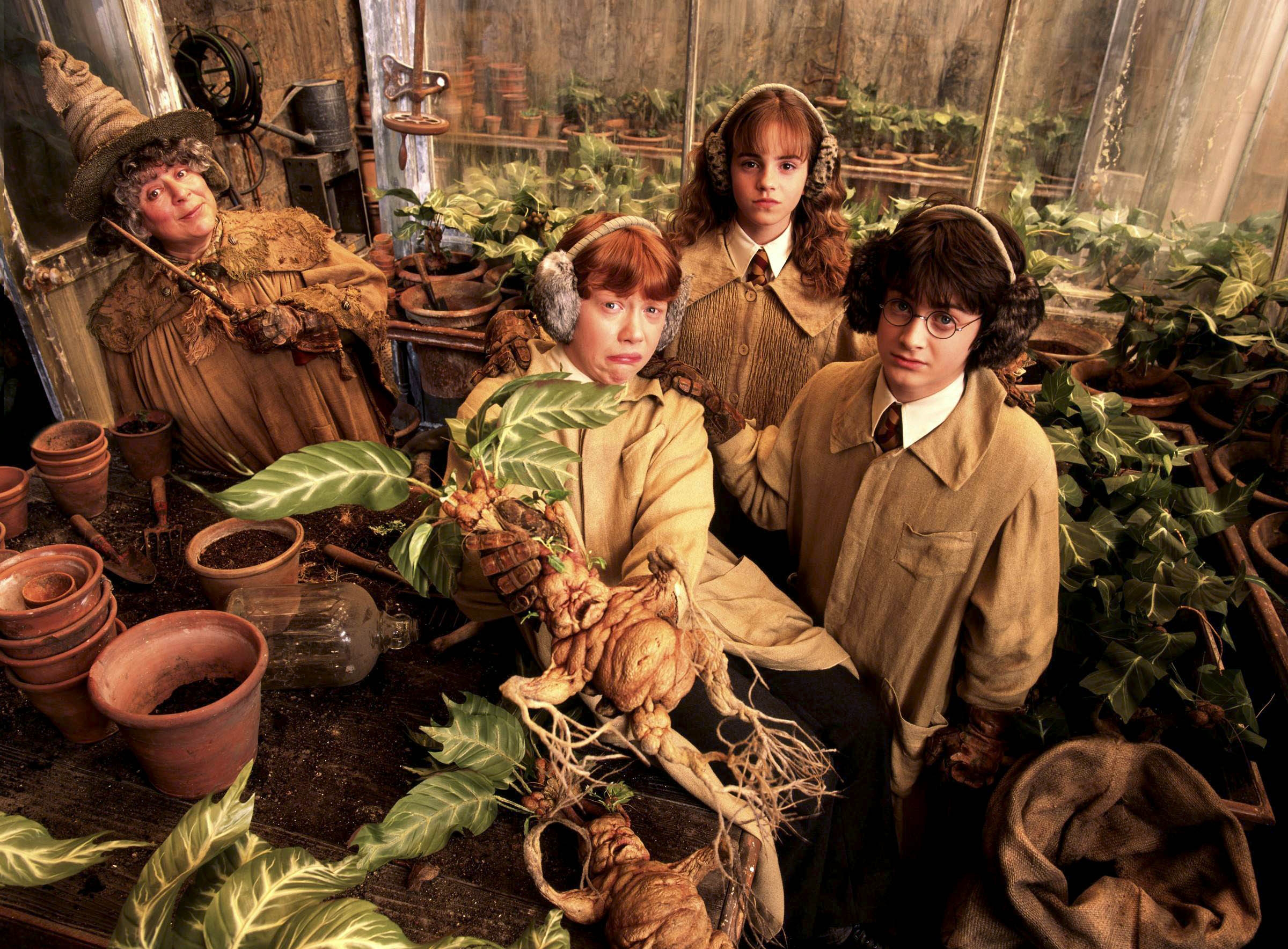
Any Harry Potter fan has brandished a stick mimicking a wand or has been fascinated by the screams of a Mandrake. But that is not the only plant that appears in the saga, although it is the most famous one. Let’s analyse the presence of plants in the movies. Some of them are real, but some are the work of the author’s imagination.
At Hogwarts, students cast spells, wave wands, chase those who want to end peace, learn how to live in a complicated world and, on top of that, they learn about plants. How do you practice magic without turning to plants? Many species’ medicinal properties have inspired those who wrote potions and ointments into their works of fiction, and Harry Potter is not an exception. Valencia held, until this past August 11, the Harry Potter travelling exhibition. Despite offering some amazing details and lots of material, the lack of interactivity was so obvious that children and adults rushed like crazy to pick up the mandrakes to take the dreamed picture and imagine, just for a moment, that they were students at the prestigious school of magic that captivated us in the films.
Herbology lessons
If we were students at Hogwarts, we would know one of the required classes for the next five years would be Herbology with professor Pomona Sprout. Herbology is like magical Botany, where plants inspired by real species mix with others that bear such incredible powers that are completely made up.
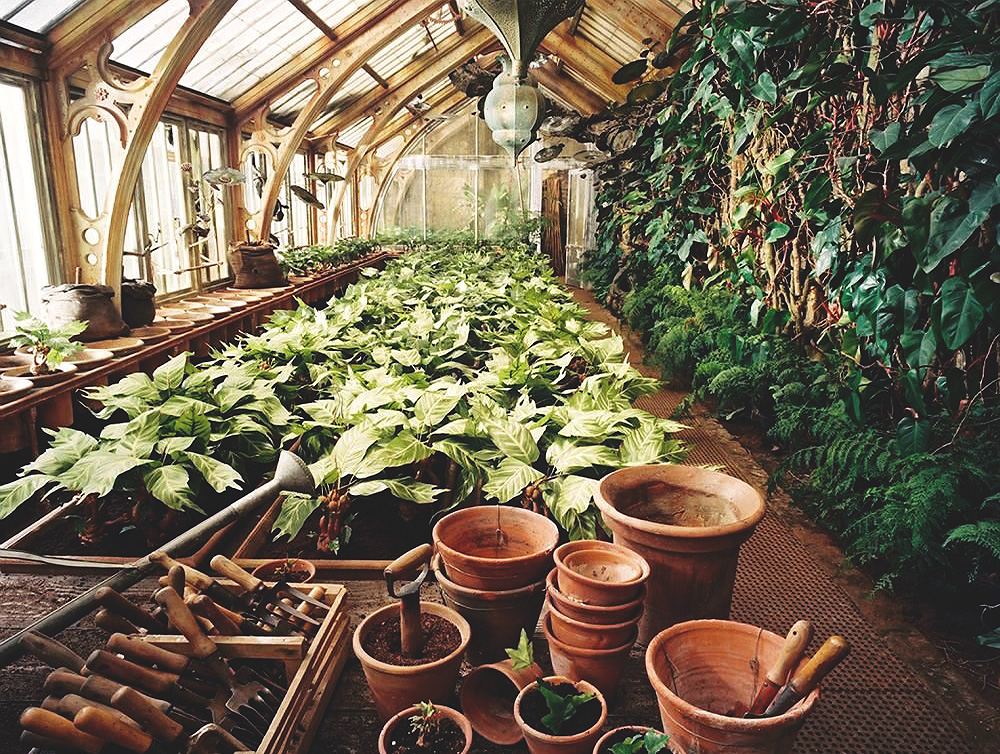 Greenhouse at Hogwarts / Warner Bros Pictures
Greenhouse at Hogwarts / Warner Bros Pictures
For this class, held at the stimulating school greenhouses, where everything is big and full of non technological resources, we will need different kinds of magical manure, dragon skin gloves, ear muffs to protect us from the boisterous mandrakes (you can die just by hearing them scream) and our inseparable wand.
Furthermore, our library will grow adding books such as Encyclopedia of Toadstools, Flesh-Eating Trees of the World, Magical Water Plants of the Highland Lochs and One Thousand Magical Herbs and Fungi. With all this information and some studying, we will learn how to take care of plants, which elements to extract from them to make potions and which plants are magical in their own right. Theoretical and practical classes that more than one would sign up for if they could.
Mandrakes and other non magical plants
In spite of what it may seem, Mandragora officinarum, the most famous plant in the Harry Potter universe, is based on a real plant. Many people are familiar with its common name, but others raise their eyebrows when they find out. However, it should be clarified that any resemblance to reality is purely coincidental. But, it is true to say that this plant has always been surrounded by a magical aura, has been the centre of many legends and it even appears in The Book of Genesis.
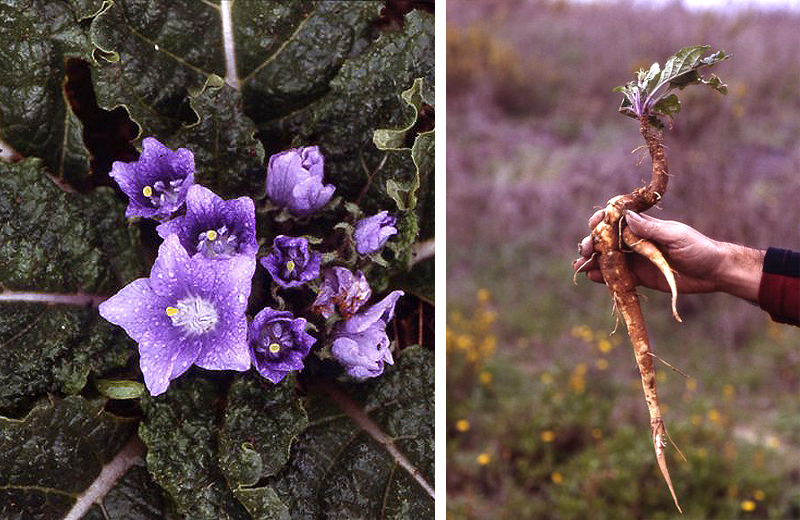 Picture of a real Mandragora officinarum. On the left, detail of its flowers and leaves. On the right, detail of its root. / flickr, Giorgio Samorini
Picture of a real Mandragora officinarum. On the left, detail of its flowers and leaves. On the right, detail of its root. / flickr, Giorgio Samorini
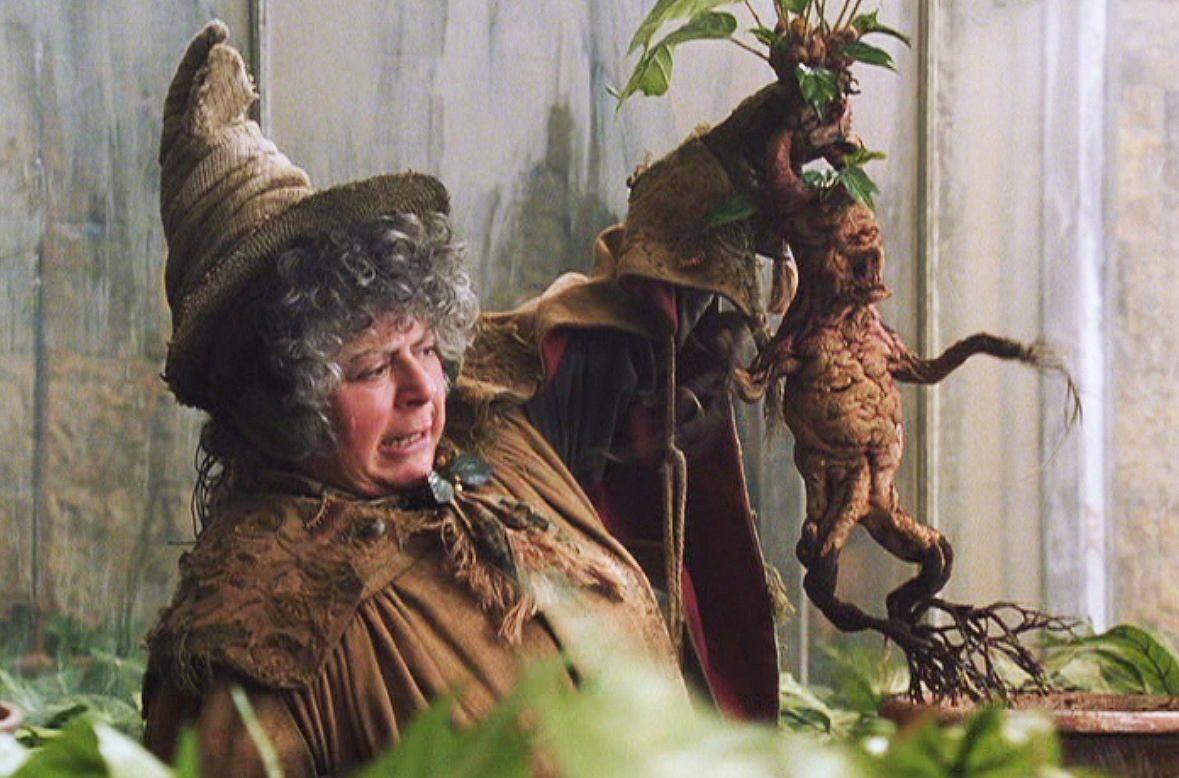 Pomona Sprout showing a mandrake in Herbology class. Scene from Harry Potter and the Philosopher’s Stone. / Warner Bros Pictures
Pomona Sprout showing a mandrake in Herbology class. Scene from Harry Potter and the Philosopher’s Stone. / Warner Bros Pictures
It belongs to the Solanaceae or nightshades family, and it’s a first cousin of eggplant, potato and tomato. Like them, it contains toxic alkaloids making it unfit for consumption. Its roots, with those sinuous forms, could make us think of the human body. Thus, this combination of oddly shaped roots, and its toxic properties, have made this plant the perfect protagonist of the darkest kind of botany. In Harry Potter’s world, its juice is used to wake the petrified victims of the Basilisk.
The willow tree, Salix sp., also plays an important role in some of the movies. If you remember Harry and Ron arriving late to Hogwarts after missing the Hogwarts Express and taking Mr. Weasley’s car as an alternative transportation, you will not have forgotten their spectacular crash into a huge, and not very friendly, willow planted on the grounds of Hogwarts. In Harry’s world, the tree is a boxer, a violent species that delivers heavy blows to anyone who comes near it.
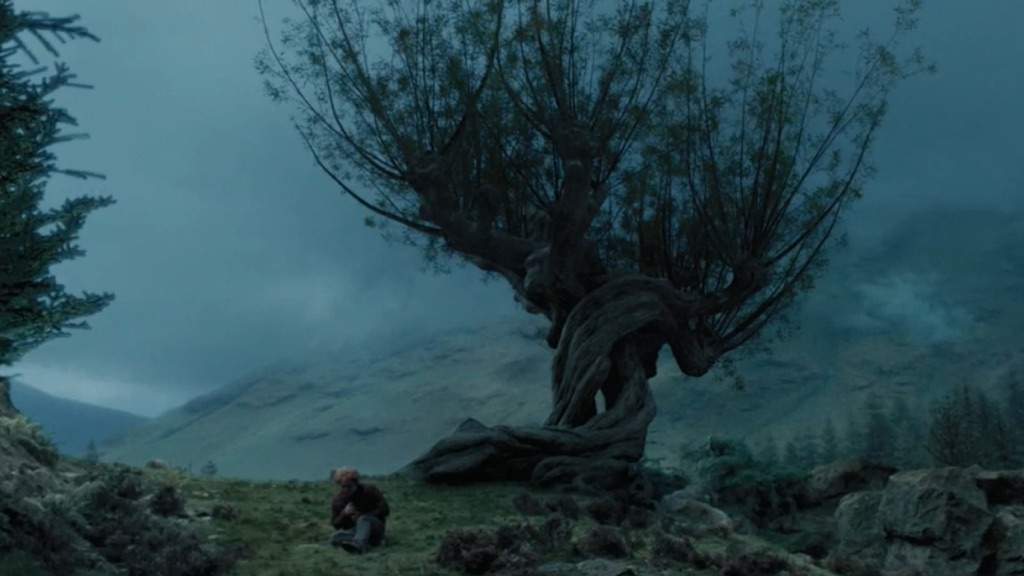 Ron sits next to the Whomping Willow just before the lycanthrope arrives. Scene from Harry Potter and the Prisoner of Azkaban. / Warner Bros Pictures
Ron sits next to the Whomping Willow just before the lycanthrope arrives. Scene from Harry Potter and the Prisoner of Azkaban. / Warner Bros Pictures
It will also appear some other night, in a quite gloomy scene for a children’s movie, and will witness the fight and transformation of a lycanthrope. In the end, they find out it hides the entrance to a secret passage that encloses one more of the many mysteries of the story, as long as you know the key to enter… In our less magical world, this tree is known for being quite ornamental (the weeping willow is one of the most popular and fascinating ones) and also because its bark contains salicin, the active ingredient in aspirin.
If we keep digging in the Botany of the films, we will find many more plants appearing as supporting characters. The nettle, Urtica sp., hat plant we avoid like the plague for fear of getting a skin rash, is used several times as an ingredient in potions to heal boils, as an herbicide or to make somebody grow. There is a similar case concerning the wormwood, Artemísia absinthium, used in real life to make absinthe and bearer of many legends about its powers, it is used in Harry’s world, due to its symbolism, to prepare potions such as the one for shrinking, the one that causes euphoria and the Draught of Living Death.
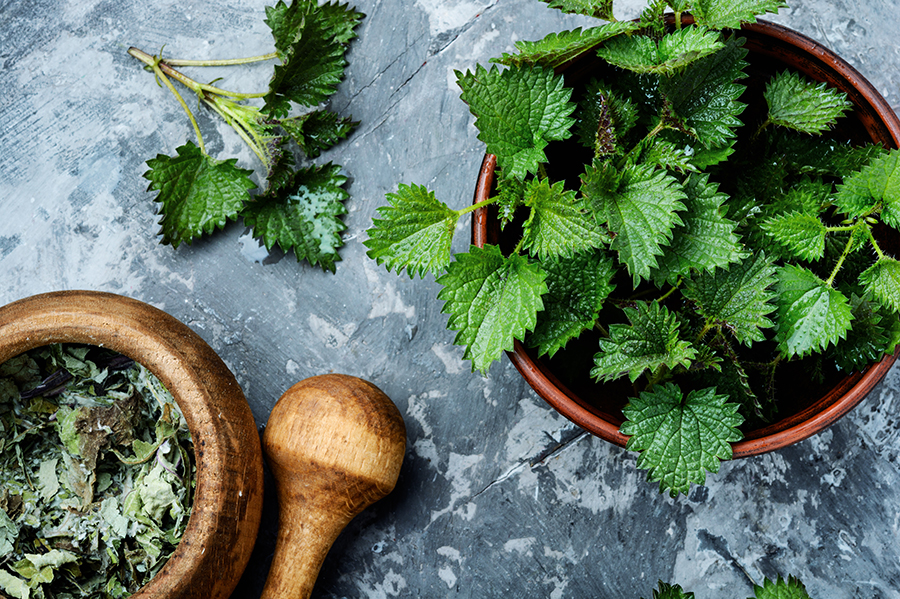 Handling nettle leaves, Urtica sp.
Handling nettle leaves, Urtica sp.
But how much truth is in it? Among the thousands of pages that tell the story created by Rowling, one can see the parallelisms between the effects of intoxication by quinine and the symptoms of the Draught of Living Death, or between its hallucinogenic effects and the potion to induce euphoria. They could all be random coincidences or proof that the author took a look at more than one Botany book to familiarise herself with plants before making up an ingredient or a spell.
This is the reason why, if we look closer and beyond the storyline, we could end up finding out more examples and realise how much Botany the students at Hogwarts learn throughout those five years. In their notes for the exam will pop up names such as asphodel, Asphodelus sp.; geranium, Geranium sp., but with fangs so our cravings for fantasy are covered), dittany,, Dictamnus sp., a name used to identify up to five different medicinal plants and, in this fantastic universe, used to make dragons sneeze, or daffodil, Narcissus sp., capable of producing a honking noise. Or even fluxweed, Descurainia sophia, a Cruciferae used as an ingredient for the Polyjuice Potion when harvested during full moon.
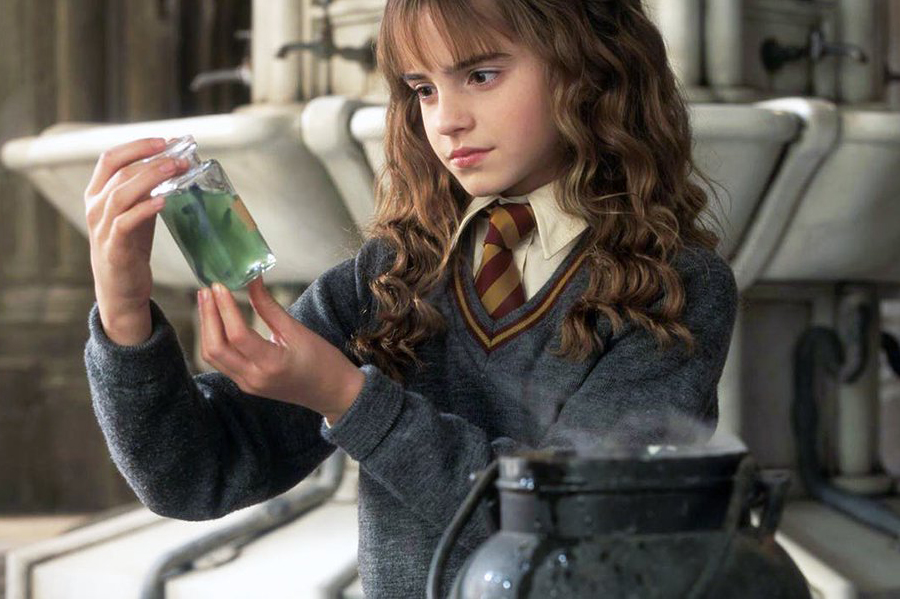 Hermione preparing a Polyjuice Potion. Scene from Harry Potter and the Chamber of Secrets. / Warner Bros Pictures
Hermione preparing a Polyjuice Potion. Scene from Harry Potter and the Chamber of Secrets. / Warner Bros Pictures
Plants and more plants that, in most cases, are only related to the real specimens by name, since this is a story in which magic dominates absolutely everything, and what less than giving each of its elements properties and characteristics that make the impossible possible.
Wood is the new black
Another botanical element in these addictive films we can’t overlook is the wood used in the most important objects to practice magic. And I’m not talking about the mahogany used to make the Nimbus 2000, that broom Harry flies in all his great quidditch victories. I am talking about the raw material used in the manufacturing of wands.
 Harry Potter choosing his wand. Scene from Harry Potter and the Philosopher’s Stone. / Warner Bros Pictures
Harry Potter choosing his wand. Scene from Harry Potter and the Philosopher’s Stone. / Warner Bros Pictures
Every wand has a story and their powers depend on the wood they are made of combined with a magical substance extracted, in turn, from a magical creature. Let’s travel to Ollivanders, a wand shop owned by the Ollivander family, widely considered the best wandmakers in history. Some of the most famous substances used in their wands are unicorn hair tail, phoenix feathers or dragon heart fibres.
Although it is tempting to become lost talking about those magical nucleus or the wands’ ability to choose their owners, we are more interested in the wood used to make them. If we could cross Ollivanders’ threshold, while we are waiting our turn, we could wander around the shop and poke about all the different boxes, only to find wands made out of mahogany, hazel, maple, acacia, silver lime, blackthorn, poplar, beech, laurel, cherry, birch, apple tree, pine, ebony, cypress, fir, cedar and many more. However, it is impossible to find a parallelism between the wood’s properties and the wand’s magical power. It would be a waste of time.
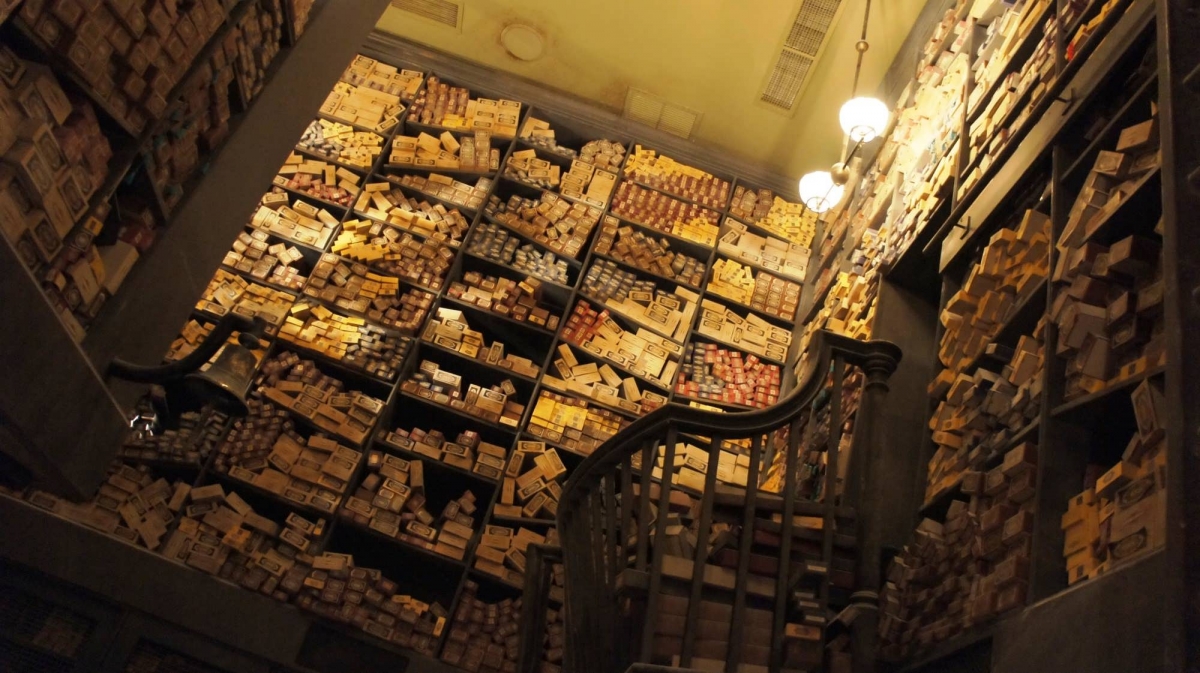
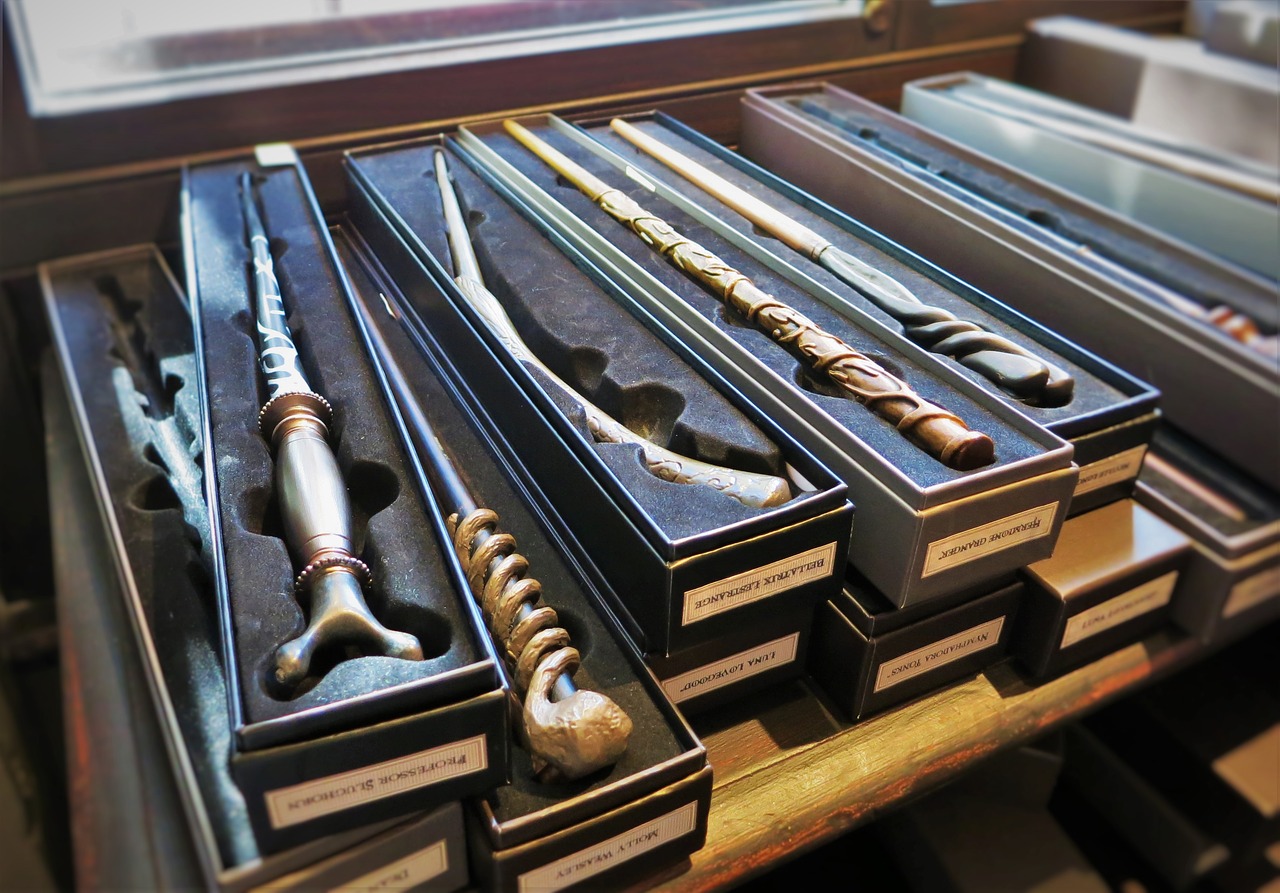 Ollivanders wand shop in Diagon Alley / Universal Studios Orlando
Ollivanders wand shop in Diagon Alley / Universal Studios Orlando
The only thing left to do is to choose a wand made out of the wood used in one of our favourite character’s wands. Harry’s was made out of holly, Hermione’s was made out of willow and Ron’s was made out of vine. Hagrid’s was oak, Draco Malfoy’s was hawthorn and Voldemort’s was yew. But, trying to cast a spell would be a much more complicated task.
The most famous and powerful of all is, without a doubt, the Elder, Sambucus sp., because this wand is able to mend other wands and is one of the Deathly Hallows. Actually, more than twenty small tree and shrub species belong to the Sambucus genus. Their wood is quite hard and highly valued by cabinet makers and tool makers. Not long ago, we talked about it in espores and we told you some of the tales surrounding the Sambucus nigra.
 Sambucus nigra stump /Wikimedia, Krzysztof Ziarnek, Kenraiz
Sambucus nigra stump /Wikimedia, Krzysztof Ziarnek, Kenraiz
Plus, it has been used as a medicinal plant since ancient times and it has finally been proven that it contains essential oils, tannins and other elements used to treat conditions such as the flu or respiratory and urinary tract infections. Maybe those attributes didn’t go unnoticed by the author and that’s why she decided that the most important wand had to be made out of a special kind of wood.
Plants you won’t find on a hike
But don’t be mistaken, Harry Potter doesn’t bear any intention to disseminate knowledge about Botany. We can find many plants in the books, that’s true. In some cases, we can even see some resemblance with reality, but just as students fly with brooms, candles float on the ceiling and centaurs exist, we can also find some plants that we have never heard of before. And rightfully so, because they are totally made up.
 Hermione is trapped by a Devil’s Snare. Scene from Harry Potter and the Philosopher’s Stone. / Warner Bros Pictures
Hermione is trapped by a Devil’s Snare. Scene from Harry Potter and the Philosopher’s Stone. / Warner Bros Pictures
When Harry and his friends are in their first year at Hogwarts, they live one of the most dangerous adventures of their lives when they fall into a dark and damp cellar inhabited by a huge plant that is determined to strangle them. The Devil’s Snare’s main goal is to protect valuable objects, such as the Philosopher’s Stone, and stop anybody who tries to come near it. How can you escape? There are two options: relaxing your body, a difficult thing to do considering the situation, or throwing a beam of light. Luckily, Hermione was there and knew both tricks.
If we are fascinated by the carnivorous plants in our non-magical world, imagine the ones from the wizarding world. The Snargaluff is a very dangerous carnivorous plant studied in Herbology class, were students learn how to collect its disgusting pods. It has nothing to do with our sundews and Venus flytraps fighting to survive by hunting insects as they fly over. The books never cease to amaze us, and we can also find huge plants such as the Venomous Tentacula, which has tentacles and teeth, and can reach up to four metres. It expels venom but, once again, nothing is what it seems like and it can be used, among other things, to save centaurs facing death.
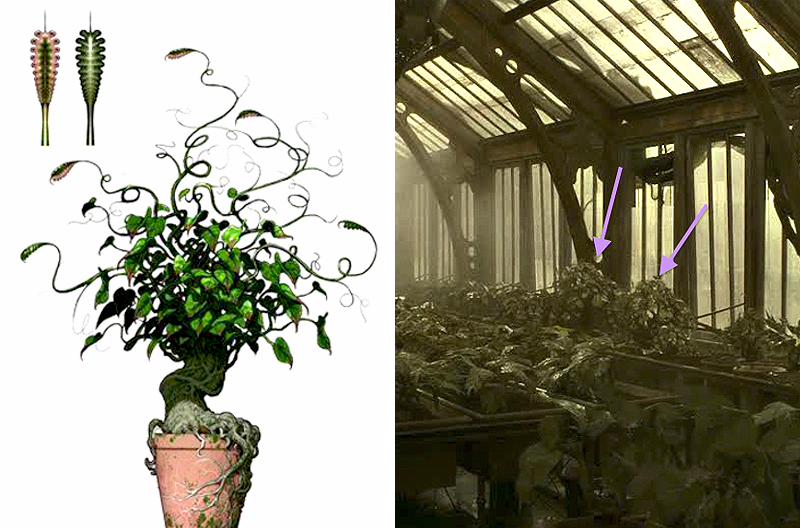 Left, detail of a Venomous Tentacula (Harry Potter: The Creature Vault). Right, Venomous Tentacula at Hogwarts greenhouses.
Left, detail of a Venomous Tentacula (Harry Potter: The Creature Vault). Right, Venomous Tentacula at Hogwarts greenhouses.
We are getting closer to the end, but first let me tell you about a spell that would delight any gardening and horticulture lover, amateur or professional: the herbivicus. If we use it, we will throw a powerful beam of light, extremely green and bright, towards the plant you want to cast the spell on and… Tada! The plant will grow and blossom in no time! Please, try it. Wave your wand vigorously and say “herbivicus” out loud pointing at that withered potus sitting in the corner and, if nothing happens, at least you would have used that souvenir wand that has been gathering dust for years.
A universe that comes to life
There is this terrifying scene in Harry Potter, one of many, during the Triwizard Tournament, where one of the tasks is diving into the sea to rescue something without knowing that this something is a loved one who is tied up at the bottom. Harry emerges triumphant from the task, saving more than his fair share of people, thanks to Gillyweed, a magical seaweed that, when eaten, fuses with the wizards’ skins and allows them to breathe underwater for almost an hour.
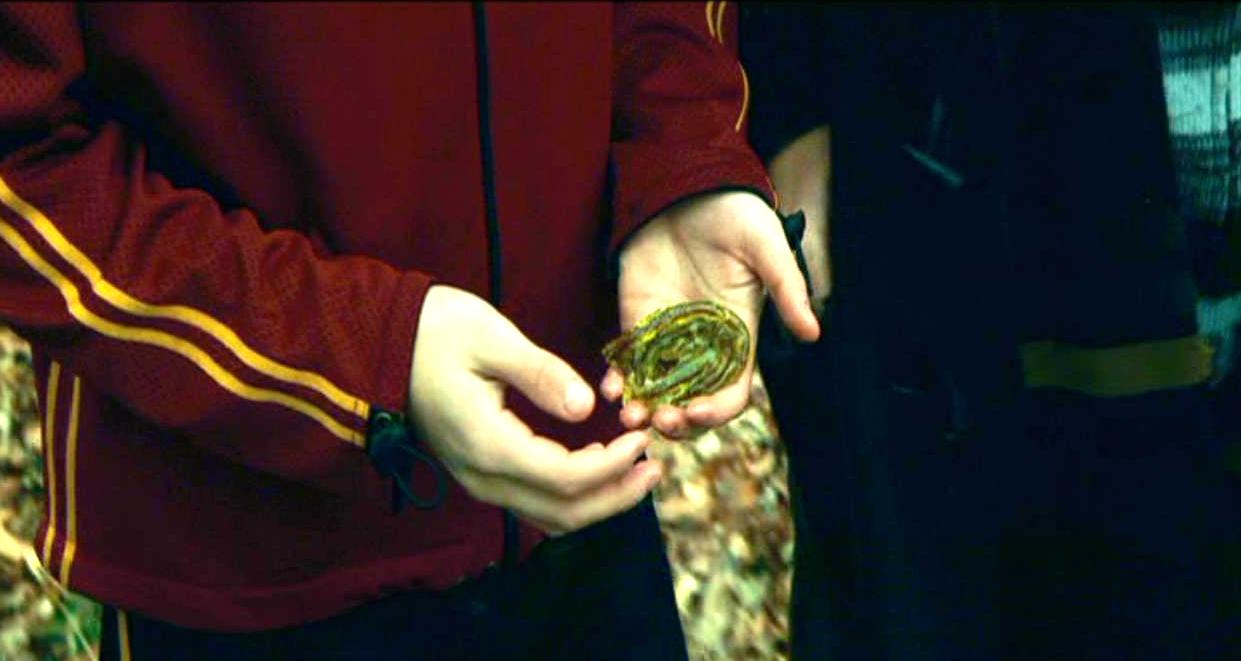 Neville Longbottom handing the Gillyweed to Harry. Scene from Harry Potter and the Goblet of Fire. / Warner Bros Pictures
Neville Longbottom handing the Gillyweed to Harry. Scene from Harry Potter and the Goblet of Fire. / Warner Bros Pictures
 Harry under the effects of the Gillyweed. Scene from Harry Potter and the Goblet of Fire. / Warner Bros Pictures
Harry under the effects of the Gillyweed. Scene from Harry Potter and the Goblet of Fire. / Warner Bros Pictures
Not long ago, Gillyweeds made headlines because a Canadian research group found some algae that invaded salamander embryos showing a unique intracellular relationship between those algae and vertebrates. After some tests, they discovered algae DNA in adult salamanders. Does this mean algae can live in vertebrate’s tissue or could associate with other species? Whether this remains as an anecdote or not, the truth is there is nothing wrong with fantasising about magic, that sometimes science shows us more surprising things than magic itself, and that in the Harry Potter books and movies we can find so many different plants that make this saga, and all its details, unforgettable.
More info on:
naukas.com/2016/07/08/la-mandragora-la-leyenda-la-ciencia harrypotter.fandom.com/es/wiki/Lista_de_plantas bloghogwarts.com/2010/02/01/top-10-plantas-magicas-del-mundo-de-harry-potter esacademic.com/dic.nsf/eswiki/187186 www.quo.es/ser-humano/a20645/el-alga-de-harry-potter harrypotter.fandom.com/es/wiki/Herbolog%C3%ADa harrypotter.fandom.com/es/wiki/Madera_para_varitas




